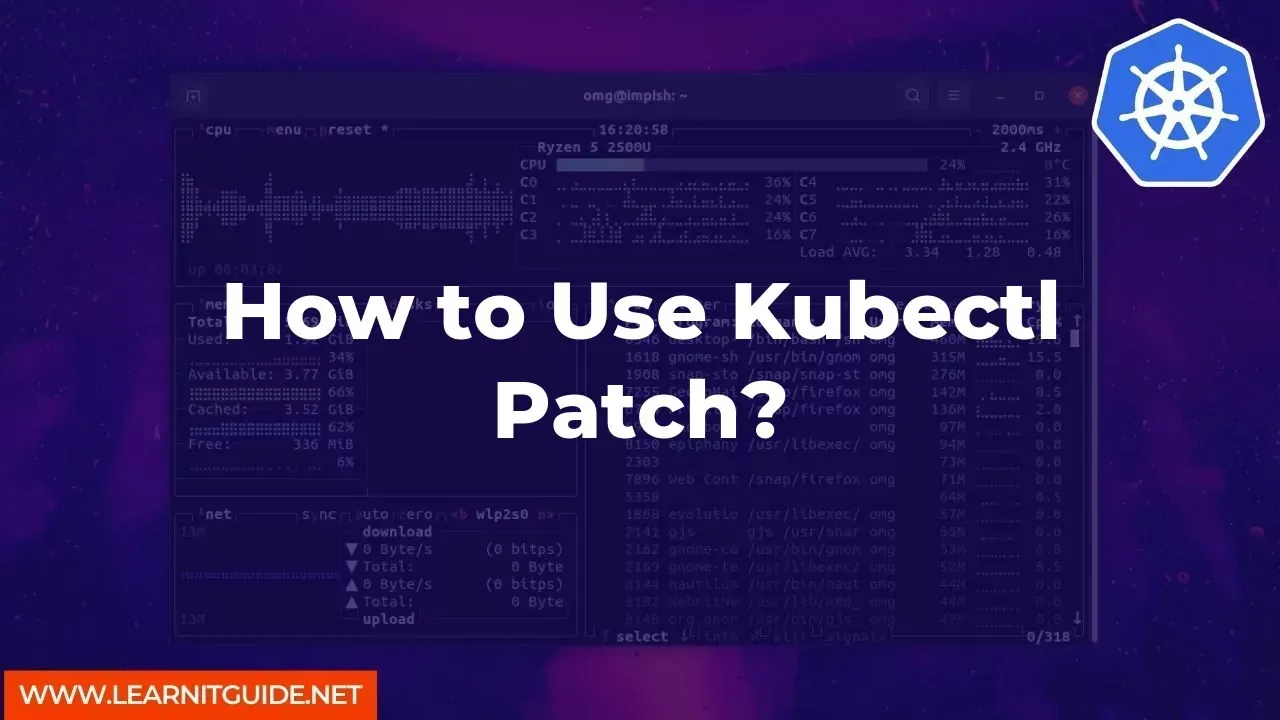Kubernetes is a popular open-source container orchestration platform that allows developers to deploy, manage, and scale containerized applications. Kubectl is a command-line interface tool that allows users to interact with Kubernetes clusters. Kubectl patch is a powerful tool that can be used to modify existing Kubernetes objects. In this article, we will learn how to use kubectl patch.
Prerequisites
Before you begin, you should have the following:- A Kubernetes cluster
- kubectl installed on your system
- Basic knowledge of Kubernetes objects, such as deployments, services, and pods.
Table of Contents
Introduction to Kubectl Patch
Basic Syntax of Kubectl Patch
How to Use Kubectl Patch
More Examples of Kubectl Patch
Introduction to Kubectl Patch
Kubectl patch is a command-line tool that allows users to update or modify existing Kubernetes objects. This command is used to modify the properties of a Kubernetes object, such as adding, removing, or updating a field. Kubectl patch is used when you want to make small changes to a Kubernetes object without having to recreate the object from scratch.Basic Syntax of Kubectl Patch
The basic syntax of kubectl patch is as follows:kubectl patch <resource_type> <resource_name> -p <json_patch>
The resource_type is the type of Kubernetes resource you want to modify. The resource_name is the name of the resource you want to modify. The -p option specifies the patch to apply, which is a JSON object that contains the modifications you want to make.
How to Use Kubectl Patch
To use kubectl patch, follow these steps:kubectl get all
kubectl patch deployment my-deployment
kubectl patch deployment my-deployment -p '{"spec":{"template":{"spec":{"containers":[{"name":"my-container","image":"my-image:latest"}]}}}}'
The above command specifies a patch that updates the image of the "my-container" container to "my-image:latest."
More Examples of Kubectl Patch
Here are some more examples of kubectl patch:Patch a pod to add a label:
kubectl patch pod my-pod -p '{"metadata":{"labels":{"new-label":"true"}}}'
Patch a service to update the port:
kubectl patch service my-service -p '{"spec":{"ports":[{"name":"http","port":80,"targetPort":8080}]}}'
Patch a statefulset to update the number of replicas:
kubectl patch statefulset my-statefulset -p '{"spec":{"replicas":3}}'
Related Searches and Questions asked:
That's it for this post. Keep practicing and have fun. Leave your comments if any.








0 Comments